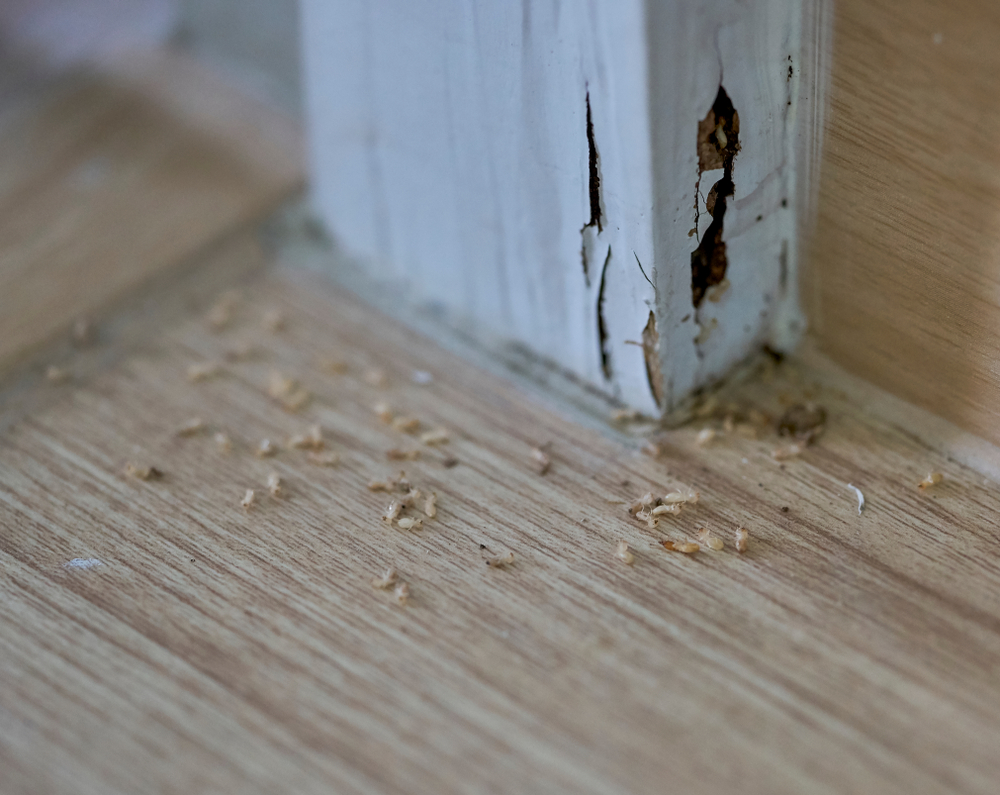As a Texas homeowner, you may already be familiar with the destructive power of termites. These tiny insects work silently and can cause extensive damage to your property before you even realize they’re a problem. I’m a seasoned professional exterminator, and I’m here to share the telltale signs of a termite infestation and how to protect your home from them with termite control from Willis Exterminating.
What Are Termites?
Termites are small, wood-eating insects that often resemble white ants. They live in massive colonies and play a vital role in breaking down deadwood in nature. However, when they set up shop in your home, they become a destructive force. There are two main types of termites commonly found in Texas:
Subterranean Termites: These live in underground colonies and build mud tubes to travel between their food source (your house) and their nest.
Drywood Termites: As the name suggests, these termites live directly within wood sources. They don’t need contact with soil and often infest furniture and structural wood.
Common Signs of a Termite Infestation
Be on the lookout for these red flags.
Swarmers: In springtime, termite colonies send out winged termites called swarmers. Their job is to find mates and start new colonies. Finding dead swarmers or discarded wings near windowsills and doors is a significant red flag.
Mud Tubes: Subterranean termites build pencil-width mud tubes on walls, foundations, or in your crawl space. These shelter them from predators and the open air as they commute to your home.
Damaged or Hollow-Sounding Wood: As termites eat away at wood, they leave behind thin veneers and hollow chambers. Gently tap on suspect wood – if it sounds hollow, you likely have a problem. You might see buckling floors, blistering paint, or maze-like patterns in the wood as well.
Frass: Drywood termites leave behind small, sand-like droppings called frass. Finding piles of frass near wooden items is a strong indicator of infestation.
Hard-to-Open Windows or Doors: Warped wood due to termite damage can cause windows and doors to stick or become difficult to open.
What Can You Do to Prevent Termite Infestations?
While professional pest control services are often essential to handle infestations, here are preventive measures you can take:
Reduce Moisture To Deter Termite Colonies
Termites can’t survive without moisture. Address all sources of dampness both indoors and out.
- Indoors: Fix any plumbing issues immediately. Leaky faucets, dripping pipes, and faulty seals around showers/tubs provide termites with the water they need. Use dehumidifiers in basements and crawl spaces. Install fans or open windows to improve airflow in musty areas.
- Outdoors: Maintain proper outdoor drainage. Gutters and downspouts should direct the water away from your home’s foundation. Slope the soil to divert rainwater and consider installing French drains if problems persist.
On the Ground and In The Garden
And make sure to eliminate any contact between wood and the soil — that’s easy access. Termites easily infest wood that’s in direct contact with the ground.
Keep firewood, construction lumber, and mulch piles elevated and distanced from the house, and leave a few inches between your mulch beds and foundation. Be aware of any decay or damage on decks, porches and fence posts, and replace any compromised wood as soon as you can.
Seal off entry points diligently to block termites’ path into your home, and use caulk or expanding foam to fill any cracks and gaps in your foundation — especially around utility lines. Check the weatherstripping around windows and doors for damage, replacing as needed. Use fine mesh screens to cover vents and examine your siding for holes or peeling paint.
Schedule Regular Pest Inspections
Even with preventative steps, infestations can happen. A professional can spot subtle signs of termites. The frequency of your inspections may depend on your region’s termite risk, but it’s important to get their perspective. After all, it could affect the value of your home. Experts are trained to find what you might miss: mud tubes, shed wings and other similar termite signals.
Additional Termite Pest Control Tips
- Remove tree stumps and dead roots: These provide food and shelter for termites.
- Termite-resistant building materials: Consider pressure-treated wood or composite options for vulnerable areas.
I Found Signs of Termites! What Now?
Don’t panic! While termites are a serious issue, addressing them swiftly is crucial to minimizing damage. It’s best to avoid DIY pest control solutions in cases of infestation — they often address surface problems without eliminating the colony.
If you suspect a termite infestation in your Dallas home, it’s time to call a professional termite pest control company like Willis Exterminating. We’ll inspect to determine the type of termite and extent of the problem, provide effective termite control solutions, and help prevent future infestations. Contact us today for a consultation and let us help you protect your home

